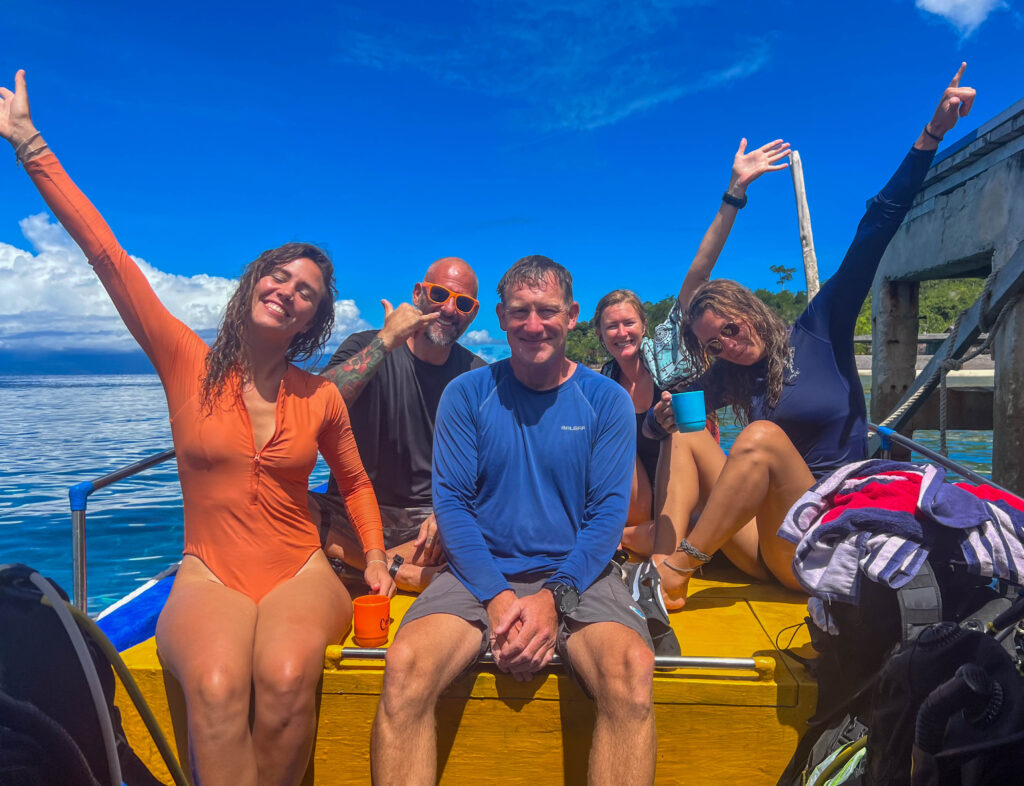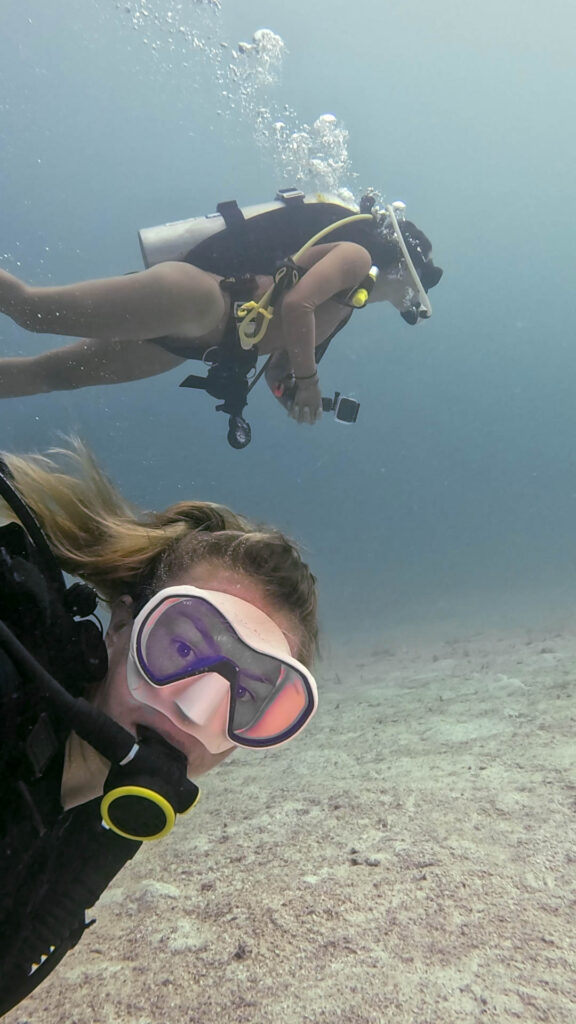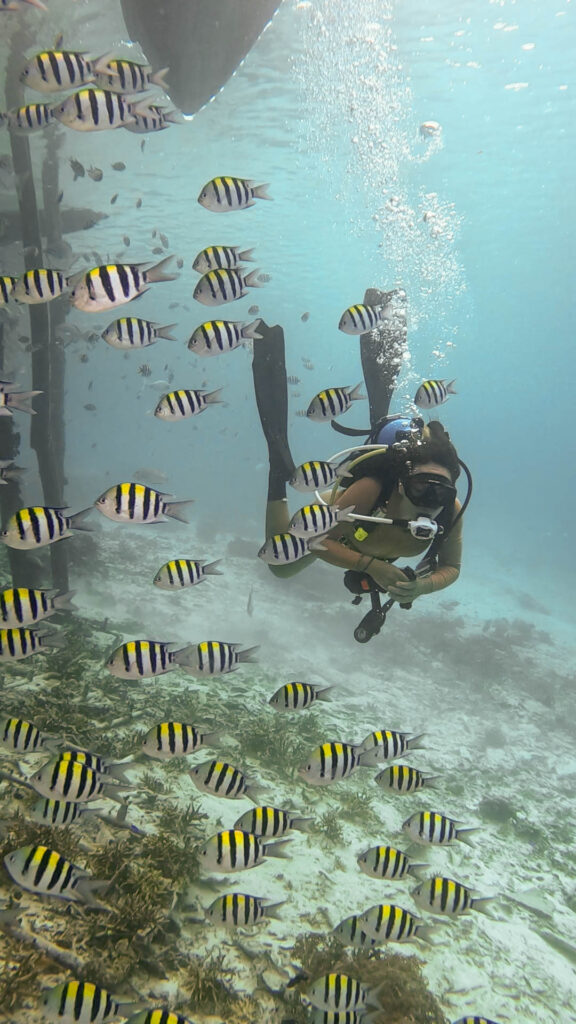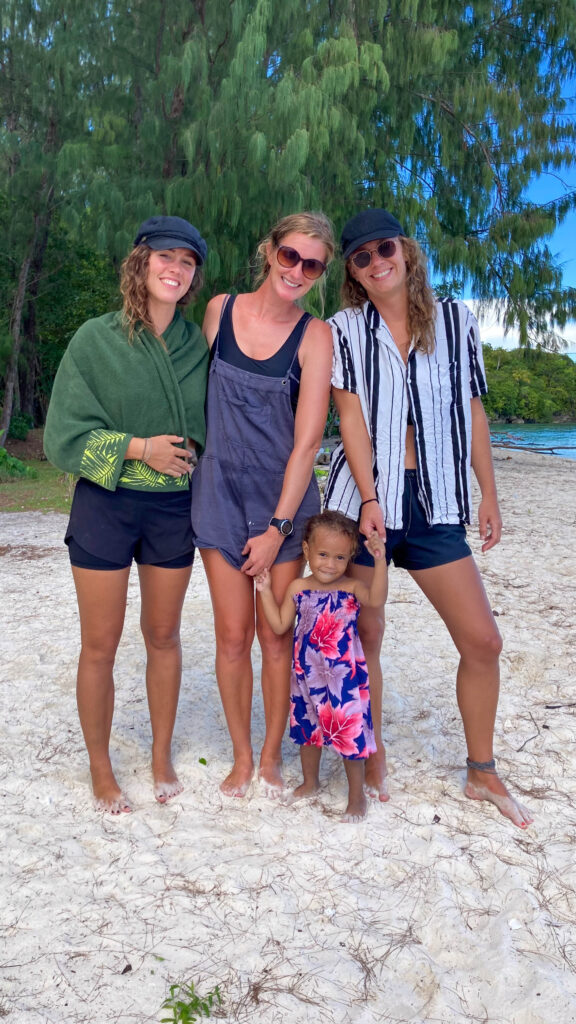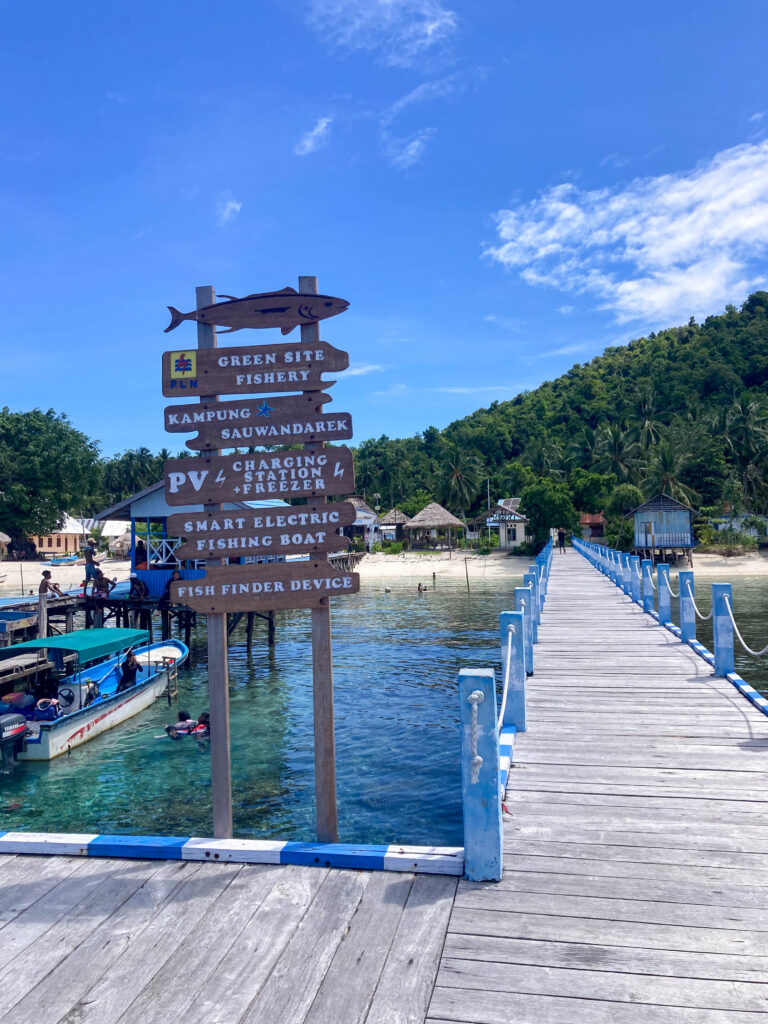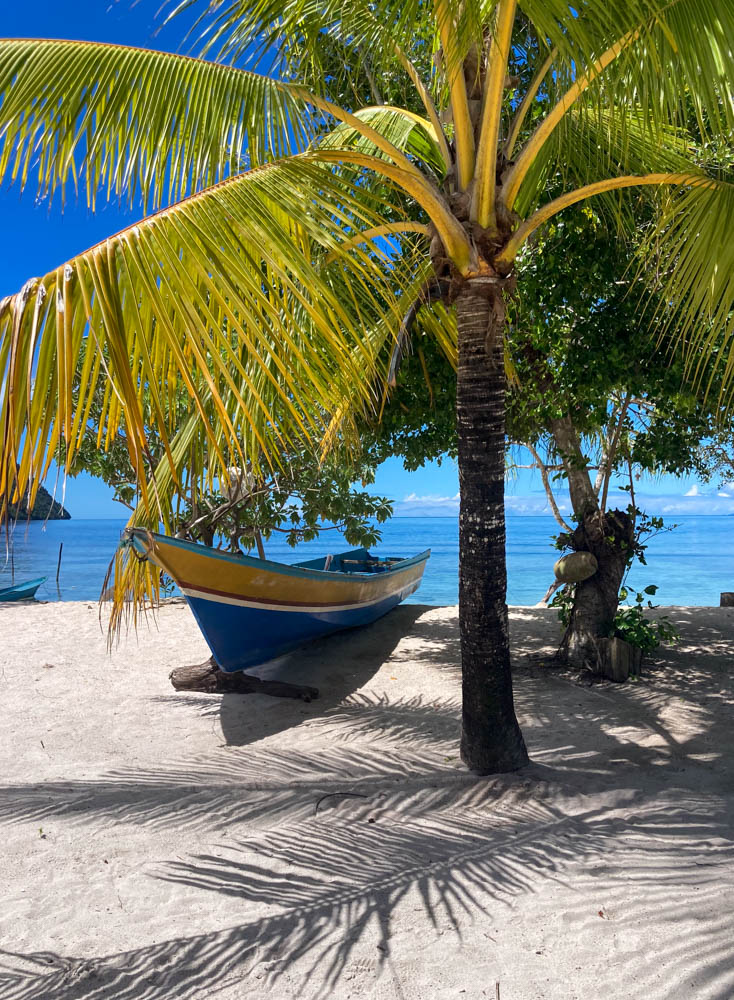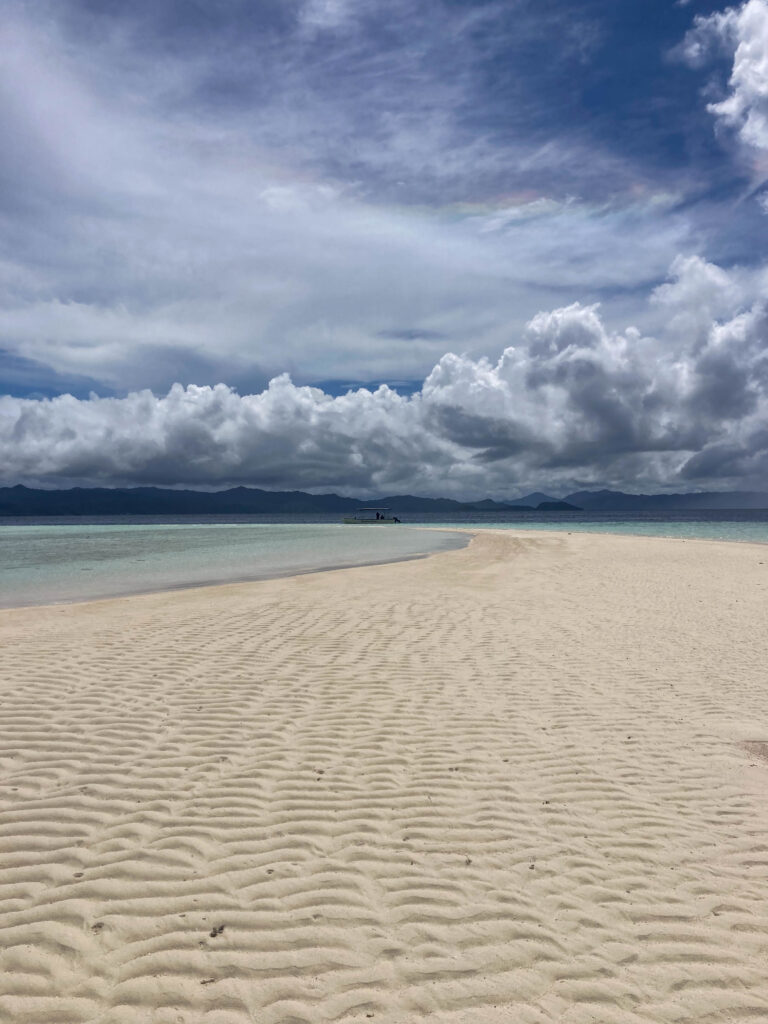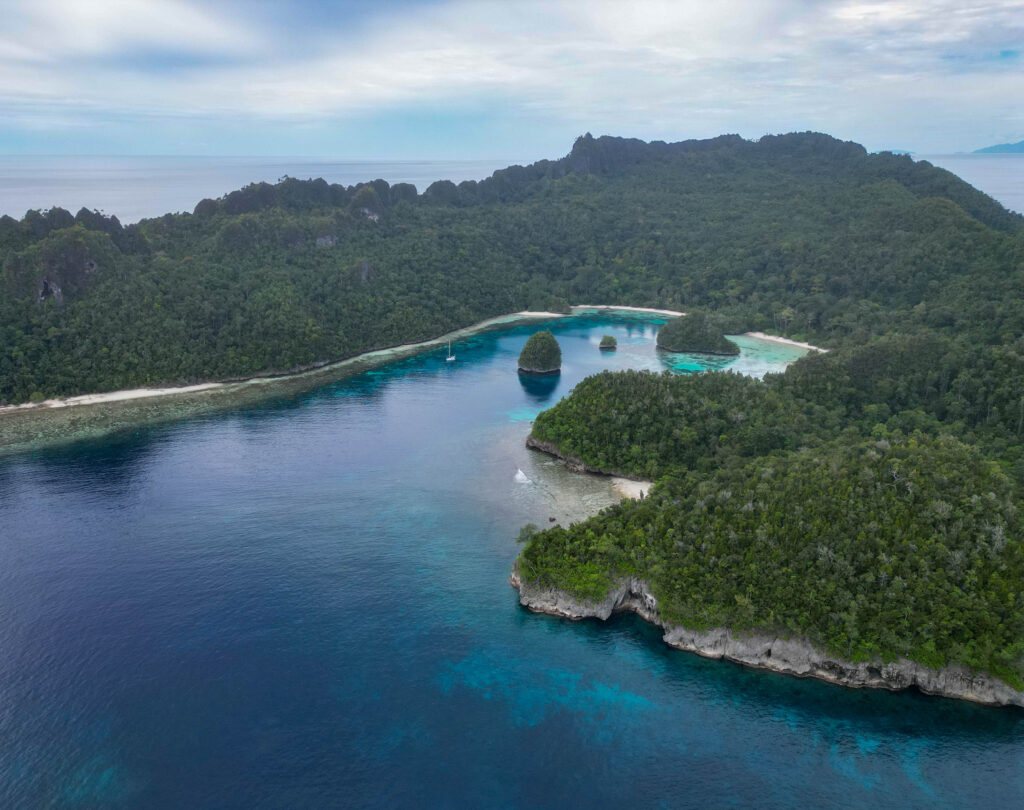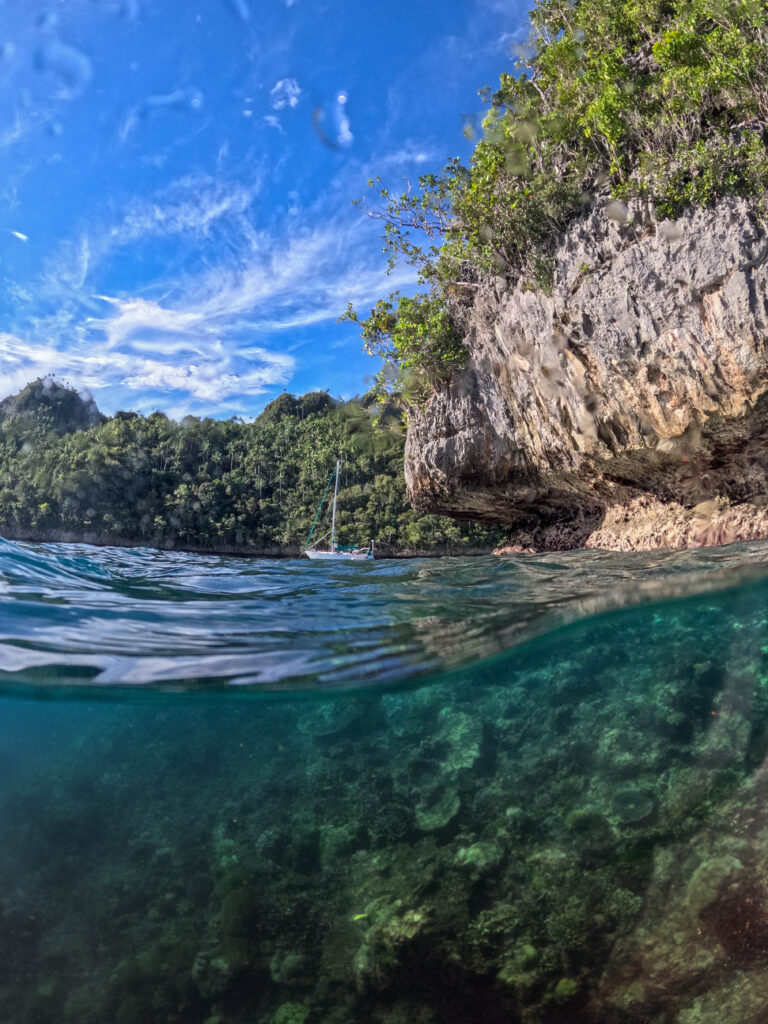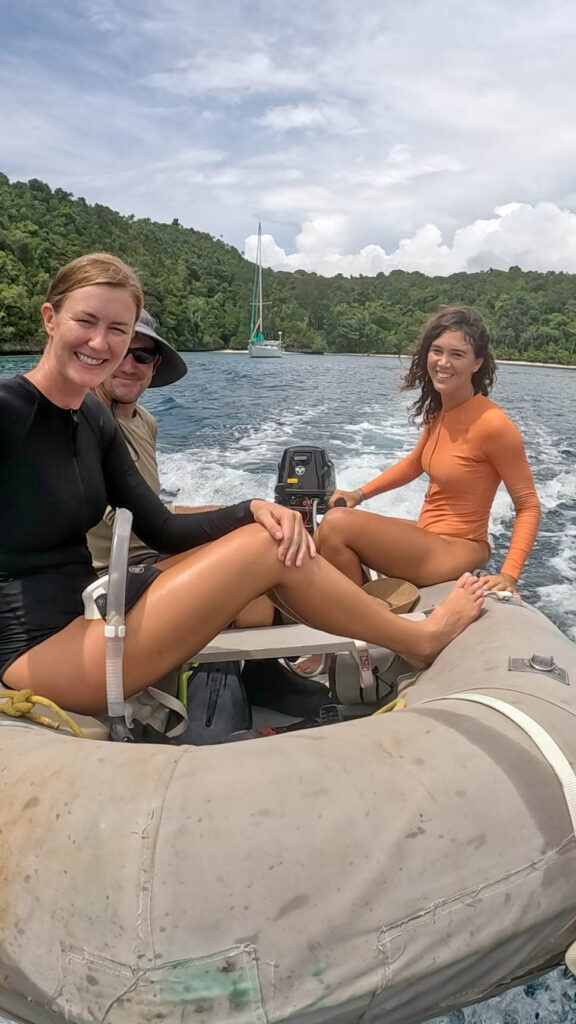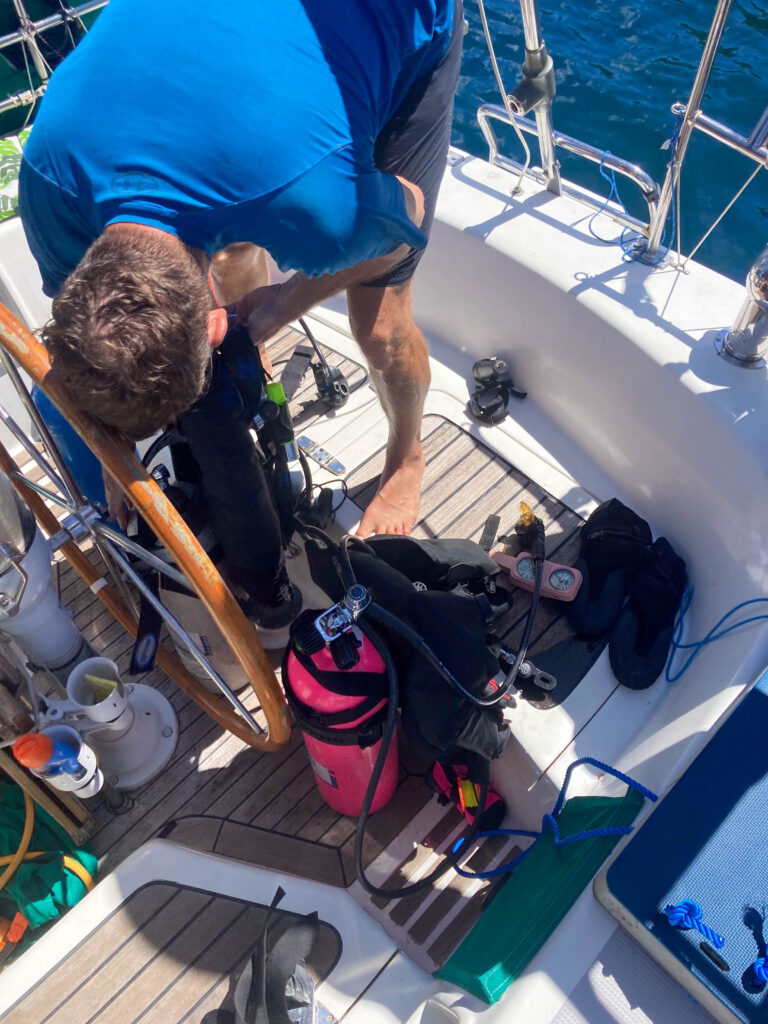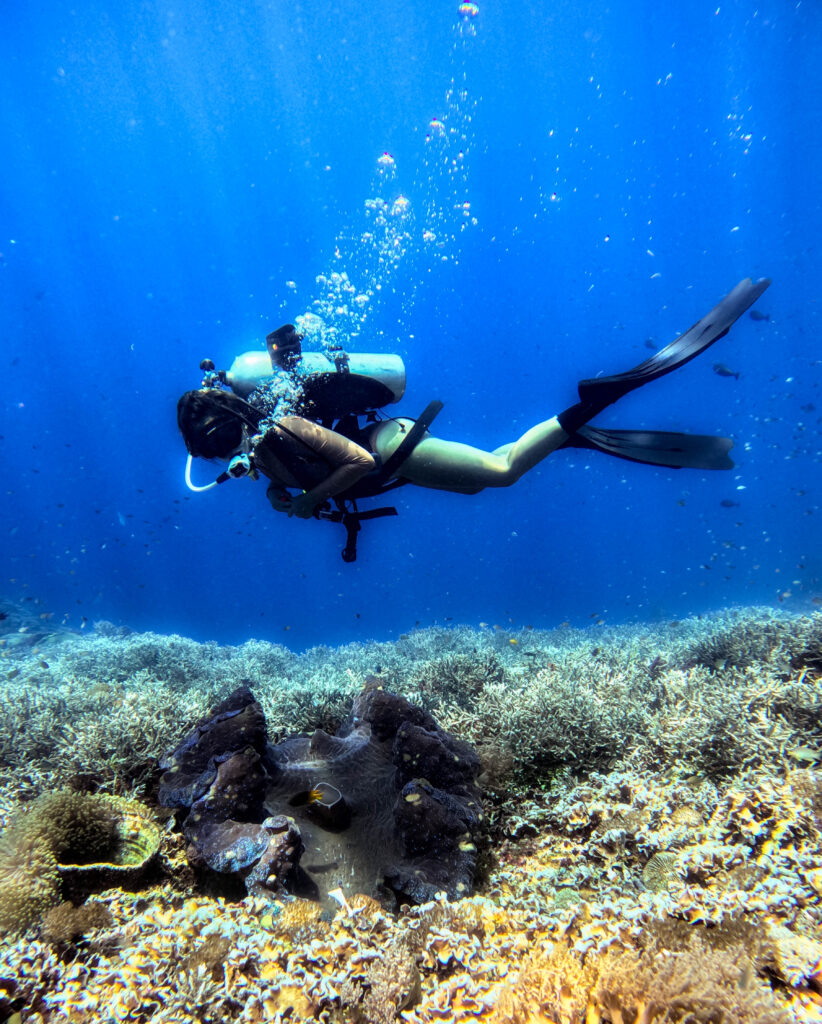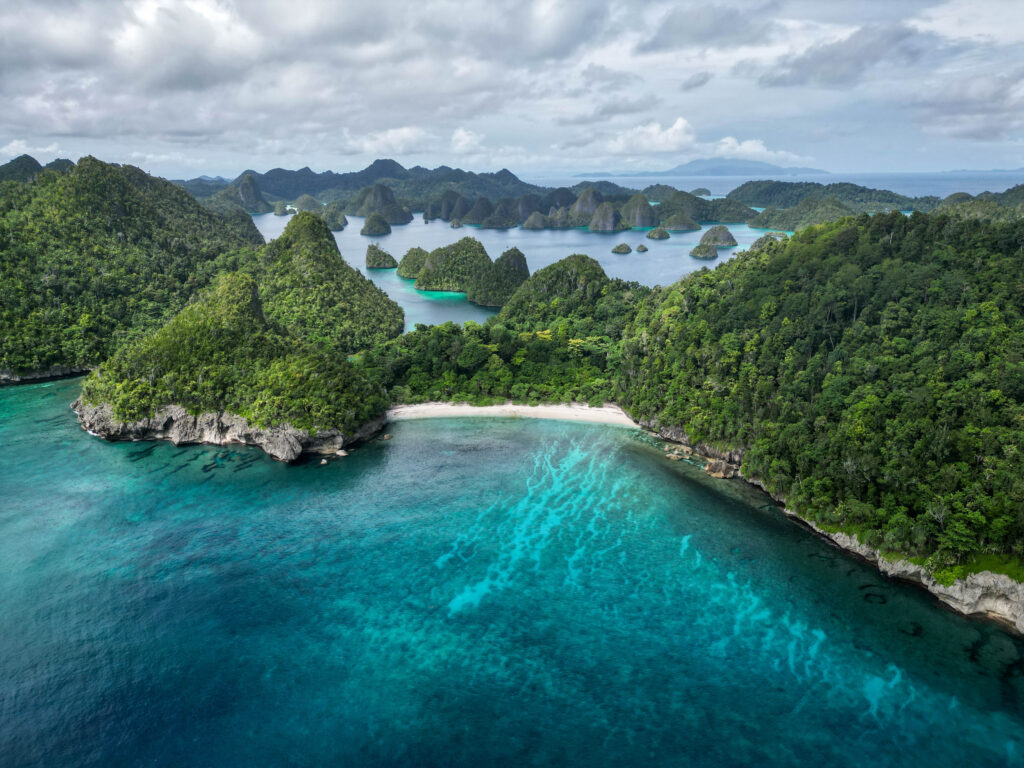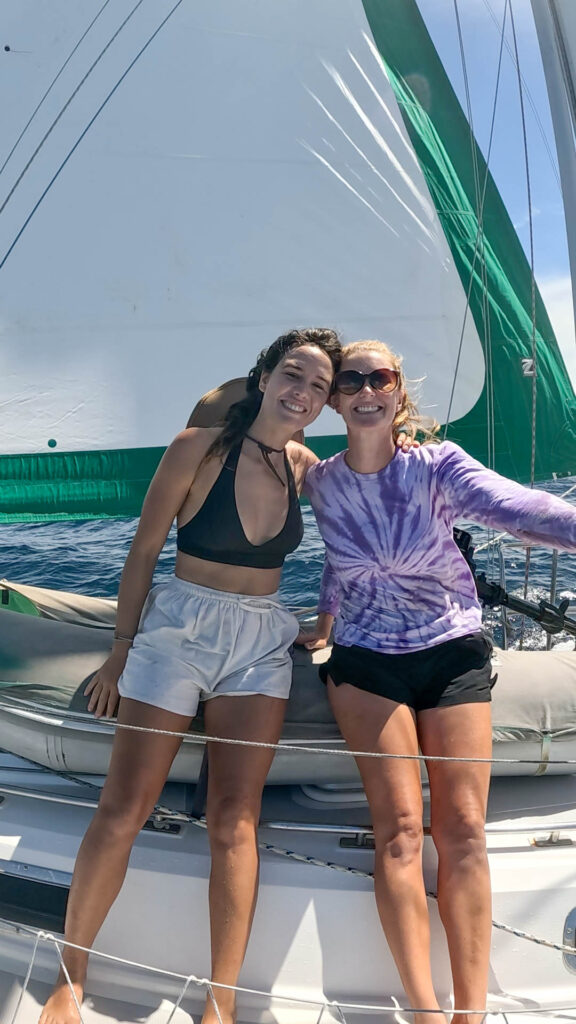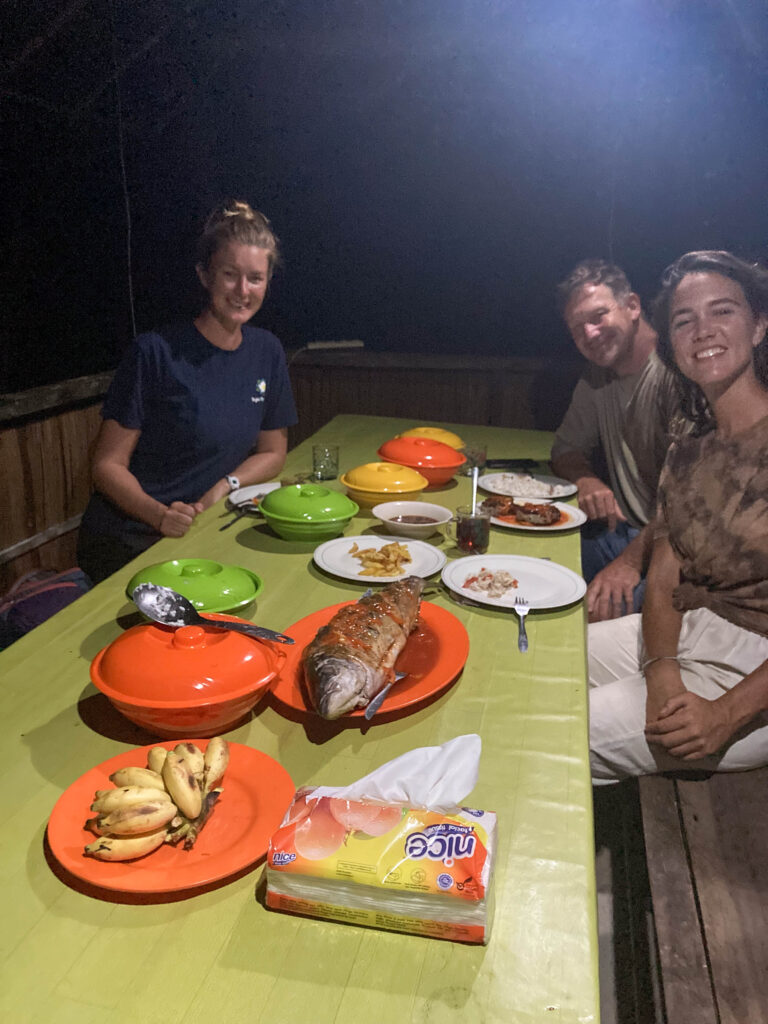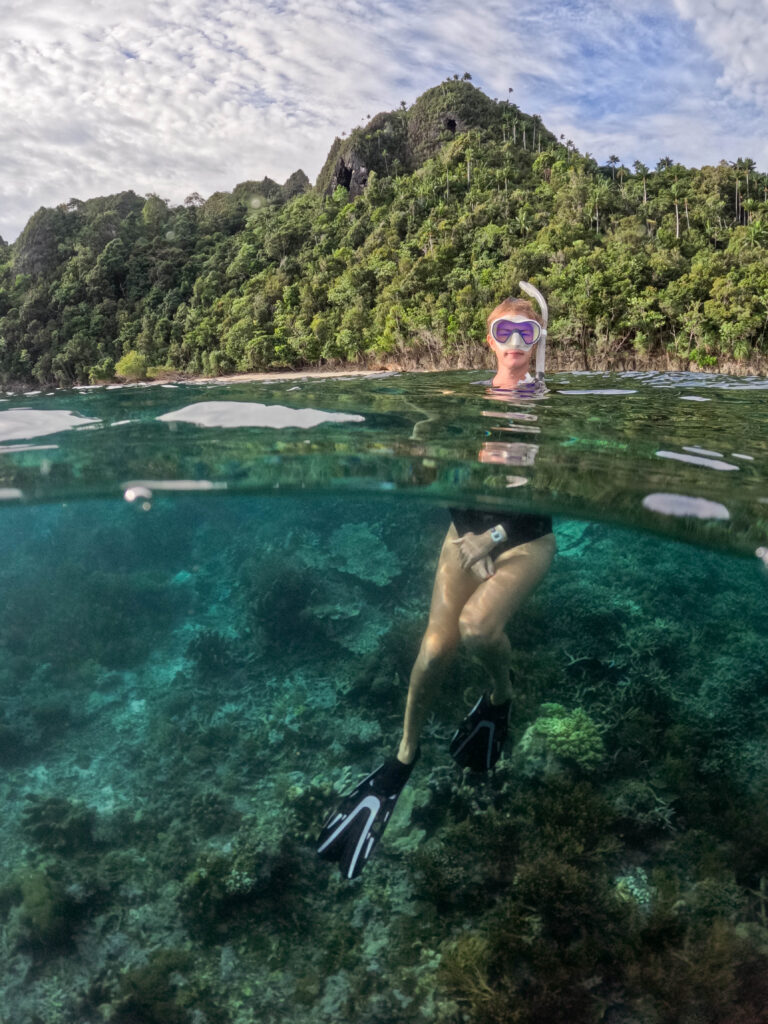With Joni joining Kevin and me onboard SV Kismet, we were ready to depart Sorong and continue to explore Raja Ampat once more. Since my and Kevin’s first time in Wayag was a little rainy, we decided to do the same trip that we had done with Kevin’s brother, Sean, but make a few different stops along the way.
Our first stop was back to the Waisai marina and we were joined by Brian on SV Holdfast who I also knew from the previous year of sailing. Brian was accompanied by a new crew member, Alex, from England, who was about my and Joni’s age. It’s also worth mentioning that Alex was in between careers and in the process of relocating to Antarctica to run the UK’s research station there.
Kevin arranged for the five of us to go diving the next day and they picked us up in the morning. The first dive was excellent with some of the best visibility I had seen thus far. Large schools of jacks and barracudas circled us as we explored the reef. The surface interval was at a nearby village which was equally cute and picturesque. The guides asked if there was anything in particular we wanted to see and I quickly spoke up, requesting a wobbegong shark and a pigmy seahorse. They certainly did not disappoint and were able to find both on the next two dives. Another excellent day of diving in the books!
With Sean gone, I did my best to make myself useful and help Kevin with the logistics and planning of the next couple of weeks. Since we had stocked up on food already, it didn’t make sense to stay in the expensive marina but we wanted to do another day of diving. Unfortunately, the underwater topography of the region made anchoring a little difficult. So I began reaching out to local homestays to see if they had mooring balls available and if they could take us diving.
Homestays are a type of local accommodation in this part of the world. Contrary to the name, you don’t stay in someone’s home but there are separate rooms/structures built to house visitors. The government funded the construction of these rooms to help local families make an income from tourism but are sadly underutilized. These rooms are normally in the form of overwater bungalows and at $30 USD per night, including food. I think they are an incredible value and plan to visit one day in the future.
There was a homestay across the way, on Pulau Kri, that offered both a mooring ball and diving arrangements so we motored our way over. The next day, the three of us went for a few more dives and were greeted by the same excellent conditions as before. We even got invited to the homestay for dinner and were served an incredible spread of local food we could hardly make a dent in it.
Over the next days, we made our way island-hopping northwest and eventually crossed the equator once more, being sure to haze Joni a little since it was her first time. Kevin quizzed her about the boat’s safety protocol and made her swim around the boat a few times. Although crossing the equator during a day hop doesn’t have the same feeling as when you’ve been in the Pacific Ocean for two weeks.
Joni was adapting to the cruising lifestyle and making an excellent crew member so far but we quickly noticed that Joni wasn’t the only new member onboard. It seemed we had also picked up a rat in Sorong which likely climbed the dock lines when we were tied in the marina. Each day we found teeth marks on any food left out and rat poop in our clothes. Since Joni slept on the couch in the salon, twice she was rudely awoken by the rat climbing on her in the middle on the middle of the night.
For two weeks we devised different types of rat traps but each night, it seemed to outsmart each one. Since we didn’t have any traditional traps, we looked online for DIY trap solutions. Before we went to bed, the galley was rigged with traps made of pots, pans, spoons, buckets, sticky paper, and peanut butter. Kevin even went as far as furnishing a trap rigged to the batteries that could electrocute it, a safety hazard on the boat but we were starting to get desperate. One morning, we woke up to one of the traps finally set off and the movement below the weighted bowl revealed we had finally trapped the rat. Now what??
Although we would all like to imagine that if we threw it overboard, a shark would swiftly come and end its life. In reality, if we dumped it off the boat, it would probably just climb the anchor chain back onboard. We weren’t planning on moving anywhere that day so keeping it captive and then dumping it along the way didn’t seem realistic. We debated trying to kill it either with fumes or force but couldn’t figure out how to do this without potentially killing ourselves, damaging the boat, or accidentally letting it go. So, we decided to let it go onshore hoping it wouldn’t reproduce with any other rats on the small island and decimate the native flora and fauna.
With the rat situation solved, we focused our efforts on continuing to explore the different islands, anchorages, and snorkel/dive sites, moving the boat to a new location every few days. Since Joni’s only prior boating experience was on SV Millennium in the shipyard, I was happy to share this time with her, remembering how special it is to see the world in this way. To think, people spend hundreds or thousands of dollars a night for the same experience on a liveaboard and we had it for free, as long as we were making Kevin’s life easier by cooking, cleaning, and coordinating plans.
After three weeks, it was time for us to return to Sorong to pick up my and Joni’s passports, process Kevin’s visa extension, and start sailing down south to Komodo.
